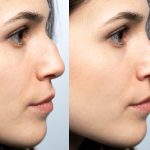Hair loss can profoundly impact one’s confidence and self-image. When considering a hair transplant as a potential solution, it’s essential to comprehend the procedure thoroughly. Hair transplant surgery involves meticulous techniques like Follicular Unit Extraction (FUE) or Follicular Unit Transplantation (FUT). FUE involves individually extracting hair follicles from a donor area and implanting them into the balding area. Conversely, FUT involves removing a strip of scalp from the donor area to harvest hair follicles. Each technique has its merits and influences the recovery period, scarring, and expected results.
The journey begins with a comprehensive consultation where the surgeon assesses your hair loss pattern, donor area, and expectations. Pre-surgery preparations might include recommendations to refrain from certain medications that could affect surgery and post-operative care guidelines. During the procedure, local anesthesia is administered to the donor and recipient areas to minimize discomfort. The surgeon meticulously extracts and implants follicles, ensuring natural-looking results.
Post-surgery, a recovery period follows, during which care instructions are provided to promote healing and optimal growth. Results become visible gradually, typically within a few months. It’s crucial to select a skilled and experienced surgeon who can customize the approach to your needs. Understanding the procedure, managing expectations realistically, and adhering to post-operative care are key elements for successful outcomes in hair transplant surgery.




